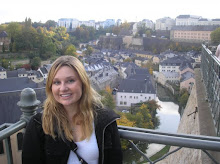 Montmartre had been the site of the Commune's first insurrection, and many hard-core communards were forever entombed in the subterranean galleries of former gypsum mines where they had retreated, by explosives detonated at the entrances by the Army of Versailles. Hostages had been executed on both sides, and the Communards had executed Georges Darboy, Archbishop of Paris, who became a martyr for the resurgent Catholic Church. His successor Guibert, climbing the Butte Montmartre in October 1872, was reported to have had a vision, as clouds dispersed over the panorama: "It is here, it is here where the martyrs are, it is here that the Sacred Heart must reign so that it can beckon all to come". In the moment of inertia following the resignation of the government of Adolphe Thiers, 24 May 1873, François Pie, bishop of Poitiers, expressed the national yearning for spiritual renewal— "the hour of the Church has come"— that would be expressed through the "Government of Moral Order" of the Third Republic, which linked Catholic institutions with secular ones, in "a project of religious and national renewal, the main features of which were the restoration of monarchy and the defense of Rome within a cultural framework of official piety", of which Sacré-Cœur is the chief lasting triumphalist monument.
Montmartre had been the site of the Commune's first insurrection, and many hard-core communards were forever entombed in the subterranean galleries of former gypsum mines where they had retreated, by explosives detonated at the entrances by the Army of Versailles. Hostages had been executed on both sides, and the Communards had executed Georges Darboy, Archbishop of Paris, who became a martyr for the resurgent Catholic Church. His successor Guibert, climbing the Butte Montmartre in October 1872, was reported to have had a vision, as clouds dispersed over the panorama: "It is here, it is here where the martyrs are, it is here that the Sacred Heart must reign so that it can beckon all to come". In the moment of inertia following the resignation of the government of Adolphe Thiers, 24 May 1873, François Pie, bishop of Poitiers, expressed the national yearning for spiritual renewal— "the hour of the Church has come"— that would be expressed through the "Government of Moral Order" of the Third Republic, which linked Catholic institutions with secular ones, in "a project of religious and national renewal, the main features of which were the restoration of monarchy and the defense of Rome within a cultural framework of official piety", of which Sacré-Cœur is the chief lasting triumphalist monument.The decree voting its construction as a "matter of public utility", 24 July,followed close on Thiers' resignation. The project was expressed by the Church as a National Vow (Voeu national) and financial support came from parishes throughout France. The dedicatory inscription records the Basilica as the accomplishment of a vow by Alexandre Legentil and Hubert Rohault de Fleury, ratified by Joseph-Hippolyte Guibert, Archbishop of Paris. The project took many years to complete.







No comments:
Post a Comment